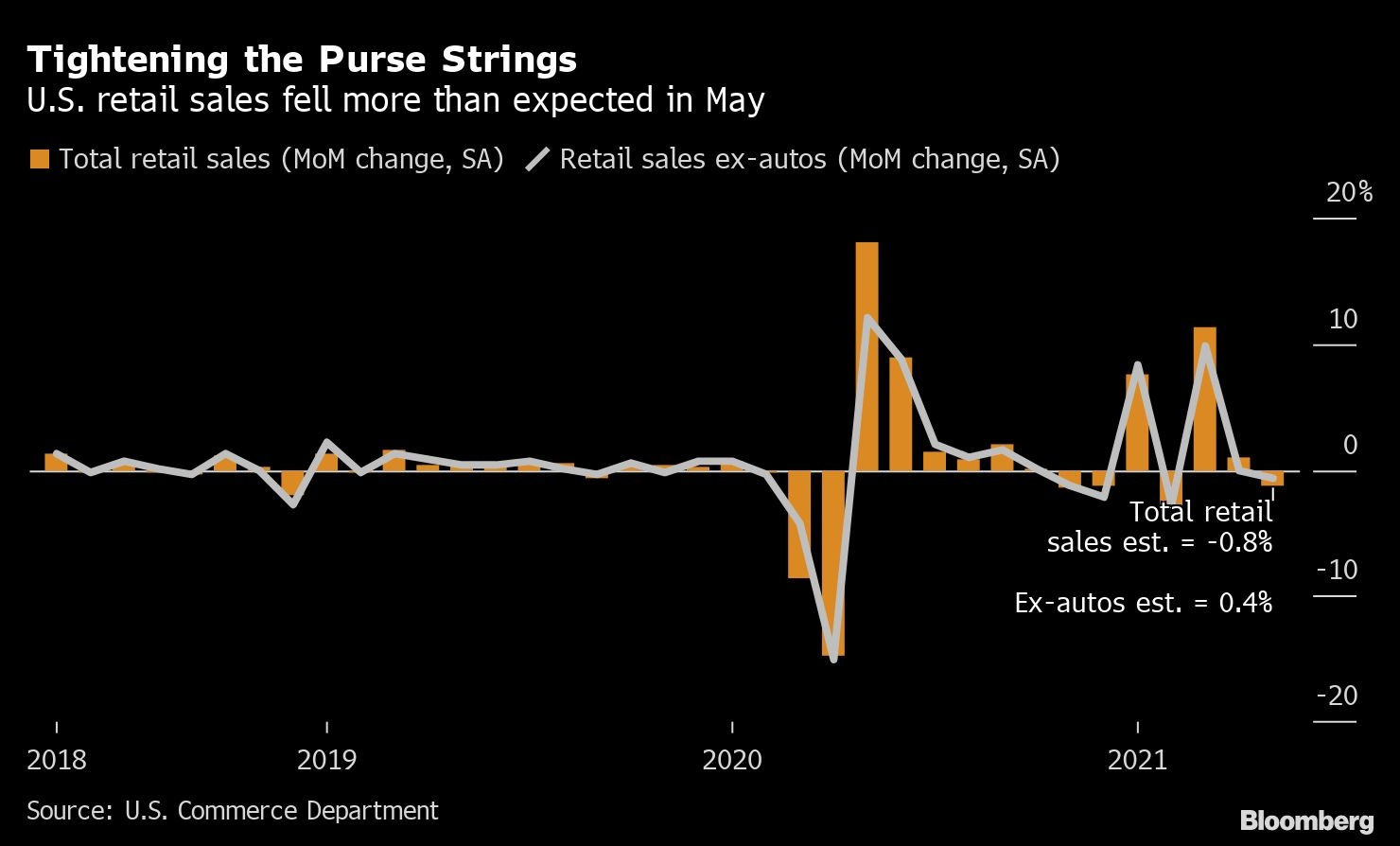Jun 15, 2021
Retail sales, factory data show growing pains for U.S. recovery
, Bloomberg News
There’s going to be a significant retail sales rebound: JLL Canada
An onslaught of economic reports on Tuesday added to evidence of a U.S. recovery in full swing, yet one experiencing growing pains.
While retail sales in May fell more than forecast, Americans may simply be shifting more of their spending to services such as travel and entertainment. The government’s report also showed merchant receipts were stronger than previously reported during the prior two months, when stimulus checks powered demand.

Other data showed factory output last month was stronger than projected, helped by a rebound in auto production that remains beset by supply constraints and longer lead times.
Demand from consumers and businesses alike has flourished as the nation emerges from the pandemic and social activity picks up. At the same time, it’s caught producers and service providers off guard, leading to supply shortages for both materials and labor.
With demand outstripping capacity, inflationary pressures continue to build against a backdrop of extensive fiscal and monetary support.
A gauge of producer prices rose more than forecast in May, reflecting in part strong gains in margins received by wholesalers and retailers, the Labor Department reported Tuesday.
The Federal Reserve “believes supply chain bottlenecks and resource constraints are not permanent, but the time horizon for when those things will work themselves out is unclear,” FHN Financial economists Chris Low and Will Compernolle said in a note. “Meanwhile, price pressures continue to rise and demand is showing no sign of weakness.”
For their part, Fed officials, who conclude their two-day meeting on Wednesday, will debate whether it’s time to consider a shift in the central bank’s bond buying program because of the economic rebound so far. The Fed has said that the current surge in consumer prices, which jumped 5 per cent in May, will be temporary.
For the last year, demand for goods has been propped up by elevated savings supported by fiscal stimulus, bringing total retail sales well above pre-pandemic levels. The 1.3 per cent decline in May retail sales suggests that as travel picks up and entertainment venues reopen, spending on goods is starting to moderate.
While eight of the 13 major retail categories posted declines in sales receipts last month, a 1.8 per cent increase at restaurants underscored a consumer shift to services spending.
What Bloomberg Economics says
“During lockdowns restrictions limited how much Americans could spend on dining out and vacationing. Reopening has allowed experience-hungry consumers to reroute dollars into services like dining out.”
-- Yelena Shulyatyeva and Eliza Winger, economists
Still, second-quarter consumer spending on merchandise is poised for a solid advance. Retail sales in the three months through May increased at a whopping 57 per cent annualized rate.
The surge in demand has manufacturers struggling to keep pace. Factory output climbed 0.9 per cent in May after a 0.1 per cent April decline, the Fed’s report on Tuesday showed. The gain in factory output included a strong rebound in motor vehicle production and strength in machinery and chemicals.
Steady business investment, resilient consumer spending and a more recent pickup in export demand are all helping to fuel orders growth. When paired with a backdrop of lean inventories, factory output is poised to pick up steam in the months ahead.
Even so, headwinds remain. Producers continue to grapple with shipping delays, unfilled job openings and supply shortages like semiconductors.
The New York Fed’s index of manufacturing in the state showed more moderate growth in June. A gauge of delivery times climbed to a record high, while more factories reported shrinking inventories.


